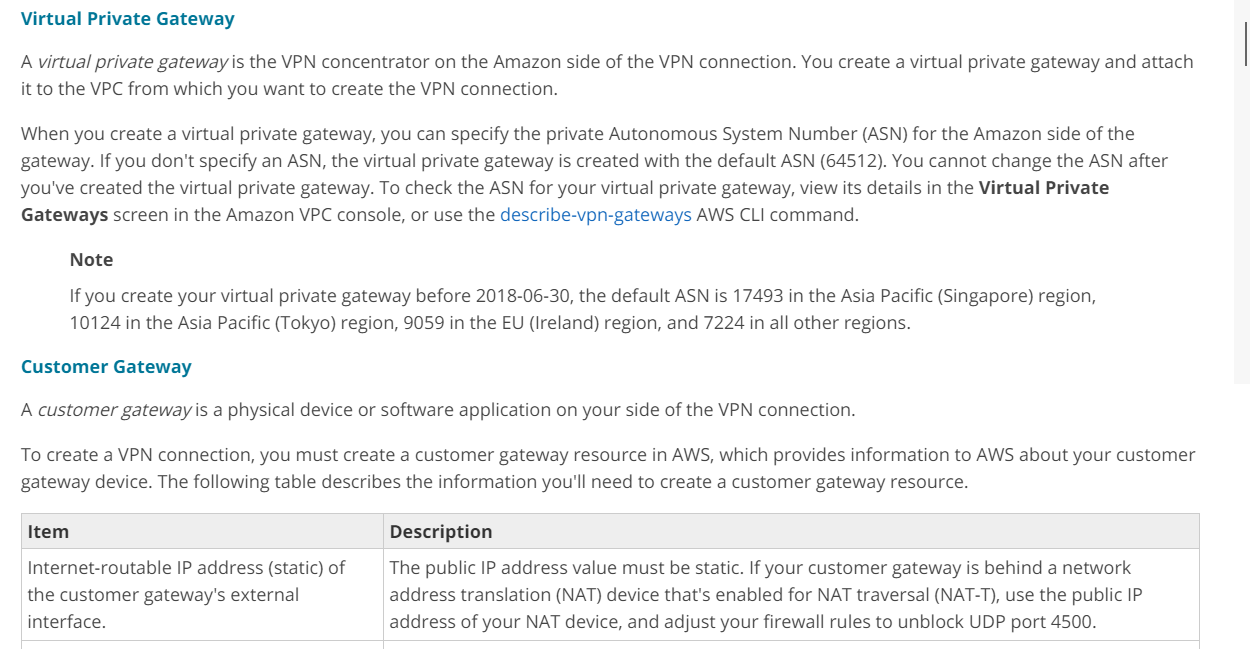Prerequisites for Site-to-Site VPN Connection
Question
You have been instructed to establish a successful site-to-site VPN connection from your on-premises network to the VPC (Virtual Private Cloud)
As an architect, which of the following pre-requisites should you ensure to establish the site-to-site VPN connection? Choose 2 answers from the options given below.
Answers
Explanations
Click on the arrows to vote for the correct answer
A. B. C. D.Answer - B and C.
This is mentioned in the AWS Documentation.
Option A is incorrect since the NAT instance is not required to route traffic via the VPN connection.
Option D is incorrect since the Virtual Private Gateway is managed by AWS.
For more information on VPN connections, please refer to the below link-
https://docs.aws.amazon.com/vpn/latest/s2svpn/SetUpVPNConnections.html
To establish a successful site-to-site VPN connection from your on-premises network to the VPC (Virtual Private Cloud), the following prerequisites should be ensured:
A virtual private gateway attached to the VPC: A virtual private gateway is the VPN concentrator on the AWS side of the VPN connection. It enables communication between your VPC and your on-premises network through the VPN connection. You need to attach a virtual private gateway to your VPC before setting up a site-to-site VPN connection.
A public IP address on the customer gateway for the on-premises network: Your on-premises network should have a public IP address on its customer gateway. This public IP address is used to identify your on-premises network in the VPN connection. Without a public IP address, your on-premises network cannot establish a VPN connection with your VPC.
In addition to the above, you also need to have the following configurations in place:
An Internet Gateway (IGW) attached to the VPC: An Internet Gateway is a horizontally scaled, redundant, and highly available VPC component that allows communication between instances in your VPC and the internet. An IGW must be attached to the VPC before setting up a VPN connection.
A security group that allows inbound and outbound traffic: You need to configure a security group to allow inbound and outbound traffic to and from the VPC. The security group should allow traffic from the on-premises network to the VPC and vice versa.
Therefore, options C and B are the correct prerequisites to establish a site-to-site VPN connection from your on-premises network to the VPC. Option A is incorrect because routing traffic through a NAT instance is not a requirement for establishing a VPN connection. Option D is incorrect because you do not need an Elastic IP address to the Virtual Private Gateway to establish a VPN connection. However, you might use an Elastic IP address to the Virtual Private Gateway for specific use cases.
